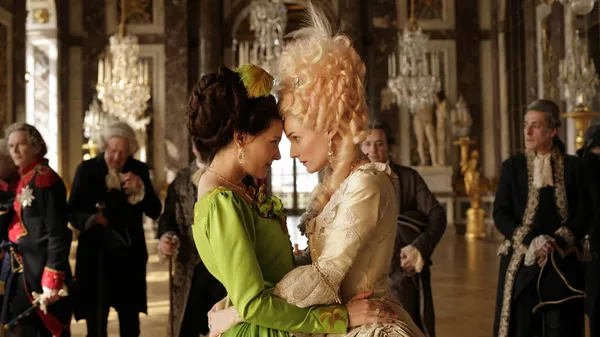Eye For Film >> Movies >> Farewell, My Queen (2012) Film Review
Farewell, My Queen
Reviewed by: Anne-Katrin Titze

Twice upon a time in Versailles. How slowly news travel in 1789. On July 14 of that year, the biggest problem at the court of Versailles, at least among the queen's ladies-in-waiting, is what might be the best book to read to her today. Marivaux? Maybe not - something comforting and Austrian, perhaps.
In Farewell, My Queen, the opening night film of the 2012 Berlin Film Festival, they settle on a fashion magazine (if you ever wondered what they looked like in the 18th century, this is your film). The ladies put rosewater on the mosquito bites Sidonie (lovely and tough Léa Seydoux as the reader and our heroine) has on her arm, and try to avoid the dead rats that pop up in unexpected places.

The rodents and insects are not the only difference to Sofia Coppola's Marie Antoinette (2006). While we trail Kirsten Dunst's Marie Antoinette for many years, from Austrian bride to imprisoned queen, with music from the 1980s and cakes from the 2000s, the glorious Diane Kruger has only four days, all at the Petit Trianon, to leave her mark. And she does - a fervent and poignant, half-aware queen. Rumours, fashions, jealousies, unrest with candles in corridors. Both queen portrayals are of lovely, complicated creatures, fascinating to watch in their ardent turmoil and luxuriant obliviousness.
Milena Canonero won an Oscar for her Costume Design in Marie Antoinette (she also did the costumes for Polanski's Carnage last year - Versaille to Brooklyn, New York). She focused on the brightness, especially the pinks, while Christian Gasc and Valérie Ranchoux, mute the dress palate a little to no less striking effect in Farewell, My Queen.
No need to pit the films against each other. In both, husband Louis XVI, is little more than furniture in his wife's emotional universe. Count Axel von Fersen is Marie Antoinette's actual love interest in Coppola's version, Gabrielle de Polignac (Virginie Ledoyen, with perfectly ambiguous expression) in Benoît Jacquot's. She is called "a folly that will cost her dearly" and we first meet her naked in bed, sleeping after two opium seeds.
July 15 - news is still hard to come by for Sidonie. She has to barter and trade her skills of embroidering a dahlia in exchange for Bastille information. Jacquot knows how to place objects and hide metaphors in plain sight. Léa Seydoux as Sidonie (Gabrielle in Woody Allen's Midnight In Paris) has a much bigger job than checking the maps between Versailles and Metz. A massive golden clock, never heard hitting midnight, a clumsy object, is nicely utilised - time is passing and what is disposable remains in constant flux. "I take notes until the day I die," says one of the characters and so should you, while you glimpse at the beautiful women, who discuss dresses the colour of baby-crocodiles, which turn out to be the color of hope in questions of life and death.
Reviewed on: 01 Mar 2012
















